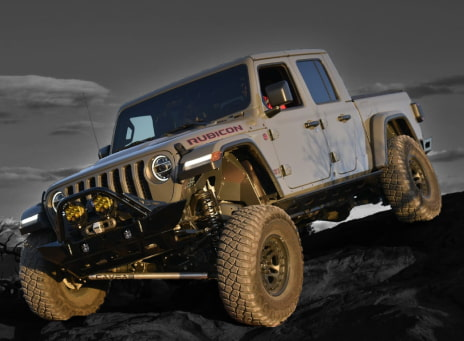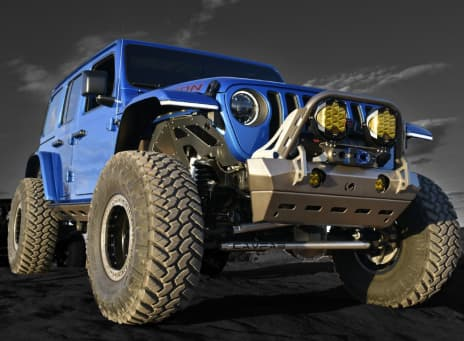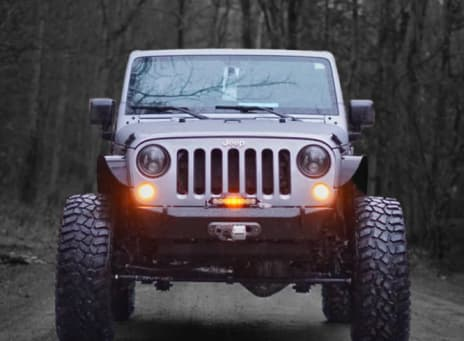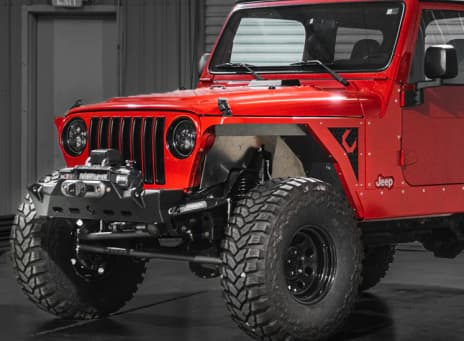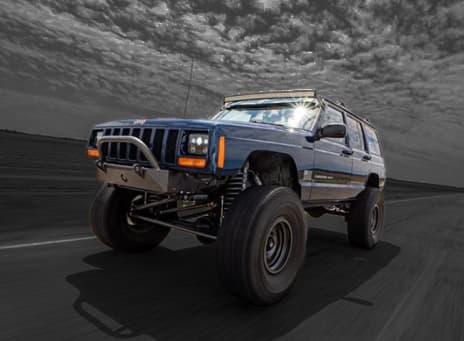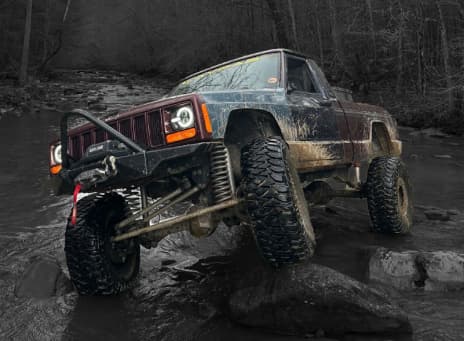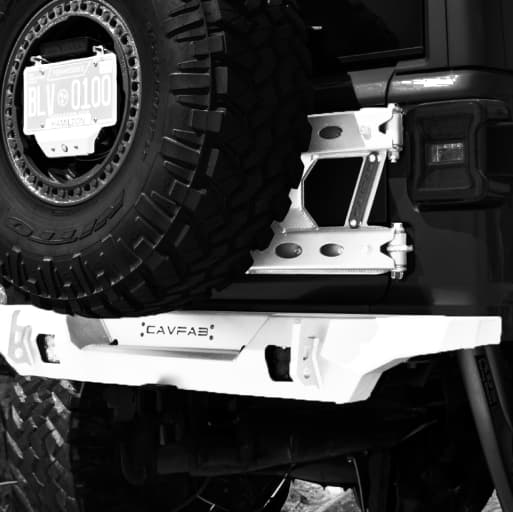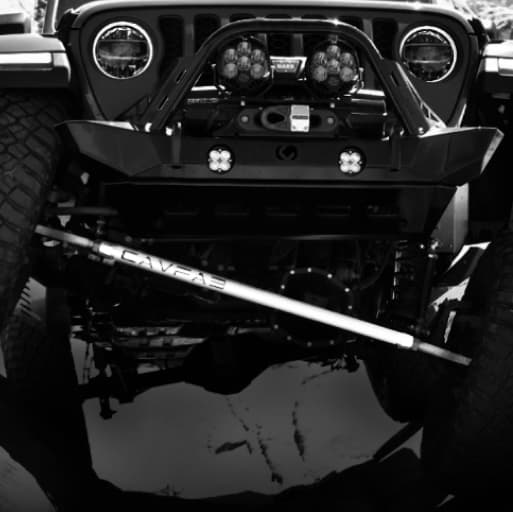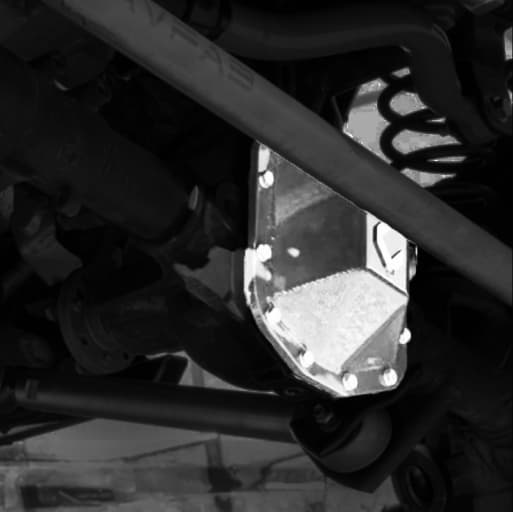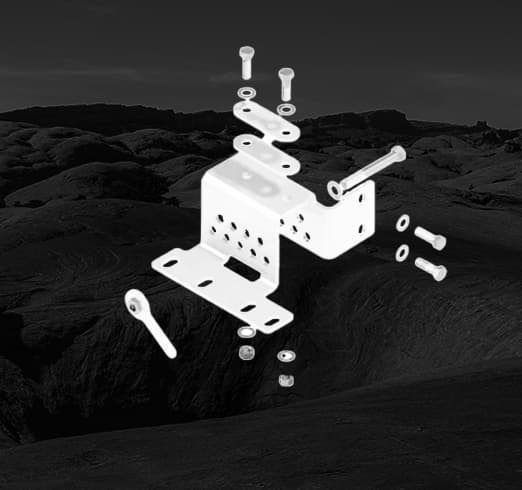Jeep Body Lift vs. Suspension Lift
Lifting a Jeep is about more than height. It's about performance, control, and trail survivability. Whether you're clearing 37s or dialing in flex for rocky switchbacks, how you lift affects every system on your rig.
That's where the Jeep body lift vs suspension lift debate comes in. These two strategies yield vastly different results in terms of articulation and handling.
Each has its place, but only one delivers the full range of performance upgrades most serious Jeep owners eventually demand. This guide breaks down how each lift type works, where it shines, and which one aligns best with your terrain, tire goals, and wrenching experience.
What this article covers:
- What Is a Body Lift?
- What Is a Suspension Lift?
- Key Differences Between Body Lift and Suspension Lift
- Check Compatibility with Steering and Driveline Components
What Is a Body Lift?
A body lift raises the Jeep's body off its frame using spacers, typically 1 to 2 inches in height.
The primary goal is tire clearance while retaining factory suspension geometry, steering angles, and ride control. Body lifts don't alter your driveline, making them cost-effective and relatively easy to install.
They're ideal for mild builds running 33s and under, offering a clean look without needing to regear, lengthen brake lines, or rework suspension components.

What Is a Suspension Lift?
A suspension lift increases axle-to-frame distance by upgrading coil springs, control arms, shocks, and related hardware. These kits typically range from 2.5 to 4.5 inches or more and allow for 35–37" tires with proper geometry correction.
Unlike body lifts, suspension kits also affect caster, pinion, and steering alignment. That's where solutions like CavFab's Over the Axle (OTA) Track Bar System come into play, preserving geometry, reducing bump steer, and improving off-road control.
Key Differences Between Body Lift and Suspension Lift
Let's examine the different body and suspension lift systems, and who each is best for.
Evaluate Ground Clearance and Ride Height
Body lifts increase space between the frame and body but don't lift the axles, which means underbody clearance remains the same. You'll still tag rocks and ledges on trail obstacles.
Suspension lifts raise the actual chassis, improving approach, breakover, and departure angles.
For serious trail riders searching for the best suspension lift kits for Jeep Wrangler, a full suspension system provides usable ground clearance, improved flex, and long-term ride control.
Assess Tire Fitment Options
A body lift lets you squeeze in slightly larger tires (typically 32–33") without geometry correction. But that ceiling comes fast. Go any bigger, and you'll need suspension upgrades to prevent rubbing and binding.
Suspension lifts, on the other hand, give you the clearance and flex to confidently run 35s or 37s, especially when paired with high-clearance fenders and adjustable arms.
If you're chasing the best suspension, a full suspension lift is the proven path, especially for long-wheelbase articulation and drivetrain balance.

Compare Installation Complexity and Cost
Body lifts are budget-friendly and straightforward. Install spacers, re-align bumpers, and done. Little to no impact on steering or driveline components.
Suspension lifts are more involved. You're replacing key geometry components: control arms, shocks, track bars, and sometimes adding sway bar extensions, driveshaft mods, or brake line brackets.
For fab shops and DIYers building long-travel setups or full-out rock crawlers, the extra labor pays off in capability. But if your customer just wants 33s for light trails, a body lift may get the job done with less overhead.
Analyze Handling, Stability, and Center of Gravity
Suspension lifts raise your Jeep's center of gravity and affect ride dynamics. Poor alignment or improper components can lead to death wobble, bump steer, or excessive sway.
CavFab suspension kits counter these effects using double-shear mounts, DOM arms, and proper caster correction to retain factory road feel with added travel.
Body lifts retain the factory handling profile but don't improve flex or wheel travel. So if articulation matters, they'll hit their limit fast, especially with heavier aftermarket bumpers or roof racks.
Check Compatibility with Steering and Driveline Components
Body lifts preserve stock steering geometry and driveline angles—no changes to control arms or track bars. That's a win for casual drivers or temporary upgrades.
Suspension lifts change everything. You'll need steering upgrades like the CROSS‑OVER STEERING XJ/TJ/ZJ/MJ/LJ Kit or even a 2.5 Ton Bolt‑On Steering System for JL/JT to regain control at flex and maintain proper alignment.
Pair that with high-clearance track bars and DIY / builder parts for a complete trail-ready setup that holds up under pressure.
Conclusion
Choosing between a body lift and a suspension lift comes down to purpose. Body lifts are fast, cheap, and cosmetic. Suspension lifts are technical, tunable, and transformative.
At CavFab, we machine every part in-house in Wildwood, GA, using American steel and elite welding standards.
Whether you're sourcing for a shop or turning wrenches in your own garage, our Jeep parts are backed by lifetime and 30-day unlimited warranties.
Ready to learn more about suspension upgrades? Check out these articles:



